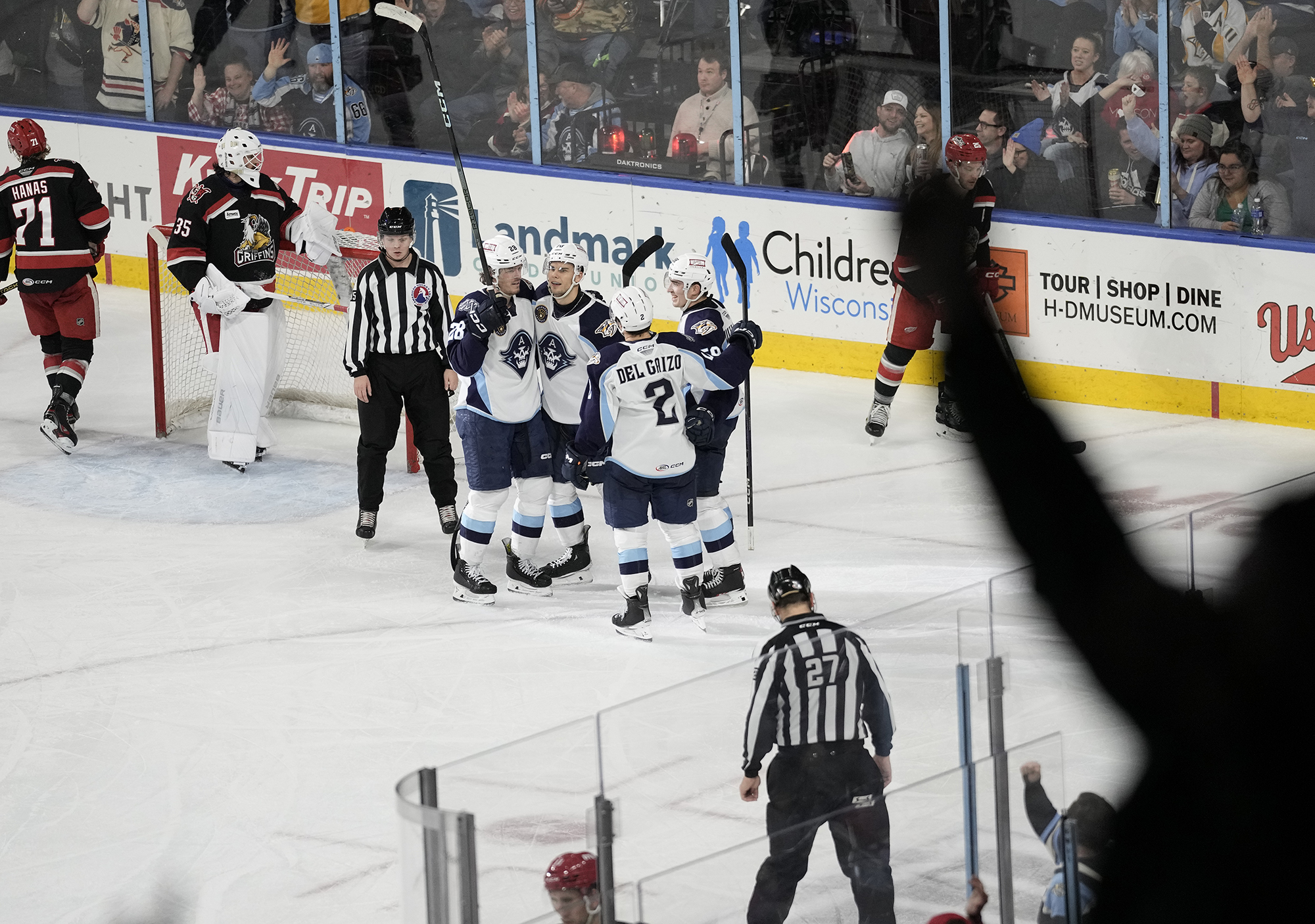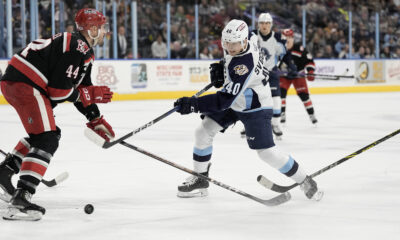22 games into the season, the Milwaukee Admirals have a 20.0 percent success rate on the power play; that’s decent, but it’s not quite the 24-percent mark they sported last year in both the regular season and the playoffs. And with snipers like Joakim Kemell and Egor Afanasyev, and playmakers like Mark Jankowski, Jordan Gross, and Dennis Gurianov, it’s right for Karl Taylor to expect more from his power-play units.
In the Admirals’ first three games this month—where they went 1-2-0—they scored just twice on 13 power-play opportunities (a 15.4 percent success rate); in their last three games, however—where they went 3-0-0—Milwaukee scored five times on 16 changes (good for a 31.3 percent success rate). So what changed?
The Admirals often run what’s known as a 1-3-1 power play. One skater is stationed at the point, three form a line from one half-wall to the high slot to the other half-wall, and one stands in front of the net. It’s not particularly innovative, but it has worked well for many teams, including Milwaukee much of last year.
Lately, however, the Admirals’ 1-3-1 formation has led to a ton of long-range wrist and slap shots that are getting eaten by opposing defenders as shown above. While the 1-3-1 can benefit teams with good shooters, good penalty kills can win shifts by staying disciplined on those shooting lanes.
The other factor that was undermining Milwaukee’s power play was their zone entries. Like so many other teams, they use the neutral-zone drop pass, but the issue has lied more with their lack of speed and urgency in both the breakout and gaining the zone. One too many passes in the middle of the ice is easy fodder for opponents standing their defense up at the blue line.
Even when the Admirals executed a solid zone entry on their off nights, they lacked creativity in their 1-3-1 system. While the hallmark of that strategy is one-time shots from the circles, good teams’ shooters adapt and often audible the play to a pass to the slot or another cross-ice feed instead of automatically teeing the puck up as shown above.
Over the past three games, however, the Admirals have improved their zone entries on the power play, attacking with speed and not delaying themselves with neutral-zone passes. It hasn’t always been flawless, but as shown above, it can draw defenders out of position, leaving a man wide open in the slot.
Karl Taylor has also changed the team’s strategy, moving to a hybrid between an inverted overload and a spread system. This 1-2-2 system features one skater at the point, two around the middle of the zone, and two around the net, relying more on cycling lower in the zone instead of up high and at least three forwards overwhelming the slot area to create havoc for defenders.
By keeping the puck lower in the zone, the Admirals are expanding the field their opponents have to be cognizant of. Instead of just counting on shots from the top of the circles, they’re threatening more high-danger chances while still forcing defenders to respect their shooting talent.
There’s no doubt Karl Taylor’s power-play units will continue to face some down nights this year, but his latest systemic adjustment might prove more useful for this roster’s skillsets.

















